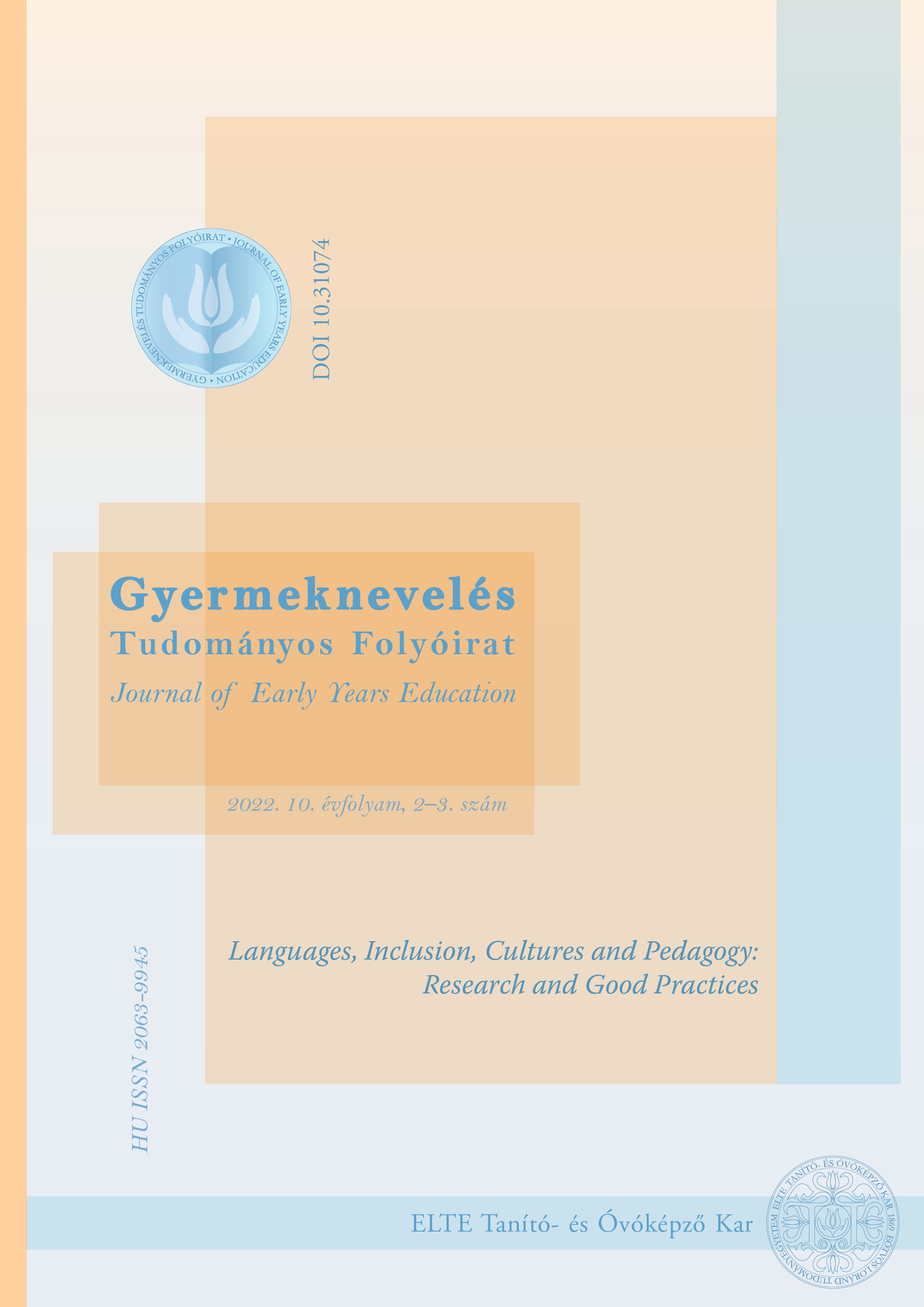The difficulties of becoming bilingual – Hungarian children in the United Kingdom
DOI:
https://doi.org/10.31074/gyntf.2022.2.231.251Keywords:
multilingual families, language acquisition, language retention, code-switching, nurturing Hungarian traditionsAbstract
Between the child and the parent, a bridge is provided by speech, the basis of human communication. In order to create this bridge, the child has to be in an environment filled with speech. However, that environment may offer as communication media not just one but several languages that link the child to other members of the immediate speech community. In our paper, we give an insight into families living in the UK in which one of the parents is a Hungarian native speaker. Within these thirty families, a total of fifty children are being raised in contact with at least two languages in a natural way (2019–2020). Multilingual parenting can be carried out in several ways, for example when the mother’s and the father’s first language is the same and they both use it when talking to the child, who is exposed to another language outside the home. It is more outstanding, however, when the father and the mother are from different nationalities and use their own language when speaking to the child, but the parent can communicate with the child in a language learned by him/her as well. In our paper, we write about the advantages of being bilingual as well as the sometimes unforeseen difficulties multilingual families might face while bringing up children.
Downloads
References
Basnight-Brown, D. M & Altarriba, J. (2007). Code-switching and code-mixing in bilinguals: Cognitive, developmental, and empirical approaches. In Ardila, A. & Ramos, E. (Eds.), Speech and Language Disorders in Bilinguals (pp. 69–89). Nova Science Publishers.
Bartha, C. (1999). A kétnyelvűség alapkérdései. Nemzeti Tankönyvkiadó.
Bárdosi, V. & Karakai, I. (1996). A francia nyelv lexikona. Corvina Kiadó.
Borbély, A. (2014). Kétnyelvűség. Variabilitás és változás magyarországi közösségekben. L’Harmattan Kiadó.
Byers-Heinlein, K. & Lew-Williams, C. (2013). Bilingualism in the Early Years: What the Science Says. LEARNing Landscapes, 7(1), 95–112. https://doi.org/10.36510/learnland.v7i1.632
Klein, Á. (2013). Utak a kétnyelvűséghez. Nyelvek elsajátítása iskoláskor előtt. Tinta Könyvkiadó.
Navracsics, J. (1999). A kétnyelvű gyermek. Corvina Kiadó.
Nemes, M. (2016). A többnyelvű családok nyelvhasználati lehetőségei. In Vargáné Nagy, A. (Eds.), Család és nevelés (pp. 115–131). Didakt Kiadó.
Nemes, M. & Guzina, Z. (2018). Az angol nyelvű média használata kora gyerekkorban. In Buda, A. & Kiss, E. (Eds.), Interdiszciplináris pedagógia és a taneszközök változó regiszterei A X. Kiss Árpád emlékkonferencia előadásainak szerkesztett változata (pp. 341–352). Kiss Árpád Archívum Könyvsorozata X. kötet..
Nikolov, M. (2004). Az életkor szerepe a nyelvtanulásban. Modern Nyelvoktatás, 10(1), 3–26. https://epa.oszk.hu/03100/03139/00067/pdf/EPA03139_modern_nyelvoktatas_2004_01_003-026.pdf
Internet References
Bozóki, A.: Kisebbségi dosszié: Oslói ajánlások. http://www.hunsor.se/dosszie/osloiajanlasok.pdf
Döpke, S.: Can the principle of ‘one person – one language’ be disregarded as unrealistically elitist? http://bilingualoptions.com.au/consTXTelit.pdf
Erdei, I. (2010). Többnyelvű környezetben élő gyerekek nyelvi szocializációja. PhD értekezés. Szegedi Tudományegyetem, Szeged. http://doktori.bibl.u-szeged.hu/id/eprint/763/1/erdei_phdertekezes_vegleges.pdf
Genesse, F.: A short guide to raising children bilingually http://www.psych.mcgill.ca/perpg/fac/genesee/A%20Short%20Guide%20to%20Raising%20Children%20Bilingually.pdf
Karmacsi, Z. (2007). Kétnyelvűség és nyelvelsajátítás. PoliPrint, Ungvár. http://www.kmf.uz.ua/hun114/images/konyvek/Karmacsi_Ketnyelvuseg_es_nyelvelsajatitas.pdf.
King, K. & Fegle, L. (2006). Raising bilingual Children: Common parental concerns and current research. CalDigest, April, 65-76. http://www.cal.org/resources/digest/digest_pdfs/RaiseBilingChildi.pdf.
Nemes, M. & Révészné Nagy, O. (2017). A mesterséges kétnyelvűségről - angolul nevelő magyar családok. In Borsos, É., Námesztovszki, Z. & Németh, F. (Eds.), A Magyar Tannyelvű Tanítóképző Kar 2017-es tudományos konferenciáinak tanulmánygyűjteménye (pp. 997–1010). Szabadka. http://magister.uns.ac.rs/files/kiadvanyok/konf2017/kotet/ConfSubotica2017.pdf
Navracsics, J. (2011). A kétnyelvű beszédprodukció jellegzetességei. http://epa.oszk.hu/00000/00011/00151/pdf/2010-10.pdf
Additional Files
Published
How to Cite
Issue
Section
License
Copyright (c) 2022 Author

This work is licensed under a Creative Commons Attribution-NonCommercial-ShareAlike 4.0 International License.

